This eight-move dumbbell leg workout builds lower body strength and improves your posture
We asked a personal trainer for an effective dumbbell leg routine to train your lower body and work your core

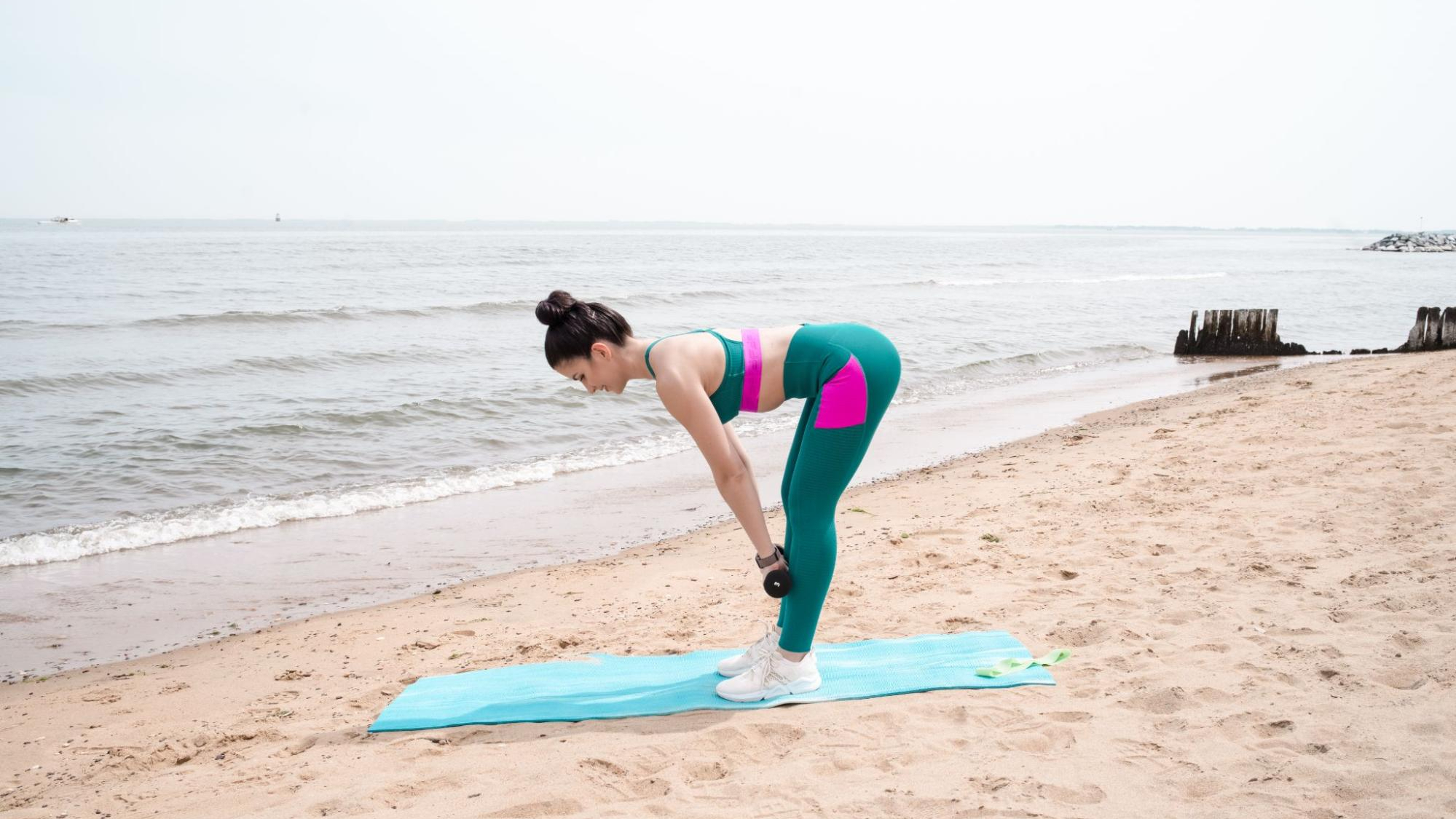
There are many ways to strengthen your legs. Some people enjoy gym equipment, while others prefer bodyweight exercises alone. But you can also build lower body muscle with just a set of dumbbells, ideal for at-home workouts and gym sessions.
This is why leg workouts with dumbbells are among the most popular ways to strengthen your legs and build lean muscle. Many dumbbell leg exercises are beginner-friendly, too, and with a good pair of adjustable dumbbells, you can perform dumbbell leg workouts at home.
To help you get started, we spoke to ACE-certified personal trainer Stephanie Thomas to find out why dumbbell leg workouts should be a regular part of your training, how to structure your sessions, and an eight-move routine to build muscle.

Stephanie Thomas is a personal trainer certified by the American Council on Exercise (ACE) and the author of The Little Book of Rest. She also created the signature wedding workout program Bridal Body Fitness. Stephanie's fitness philosophy is: "You don't have to work out; you get to work out. Take care of your body so it can take care of you!"
Eight-move dumbbell leg workout
Stephanie Thomas' dumbbell leg routine includes eight exercises that strengthen your lower body and work your core, a section of mid-body muscle that connects your upper and lower body.
Start with a 10-minute warm-up routine to encourage blood to flow to your muscles before starting. Aim to do 8-12 repetitions of each dumbbell leg exercise and repeat the eight-move circuit four times.
Dumbbell leg workout plan
| Exercise | Repetitions | Sets |
|---|---|---|
| Curtsy lunge | 8-12 (repeat on each side) | 4 |
| Donkey kicks | 8-12 (repeat on each side) | 4 |
| Lateral lunges | 8-12 (repeat on each side) | 4 |
| Reverse lunges | 8-12 (repeat on each side) | 4 |
| Romanian deadlifts | 8-12 | 4 |
| Single-leg glute bridge | 8-12 (repeat on each side) | 4 |
| Single-leg deadlift | 8-12 (repeat on each side) | 4 |
| Sumo squats | 8-12 | 4 |
1. Curtsy lunges
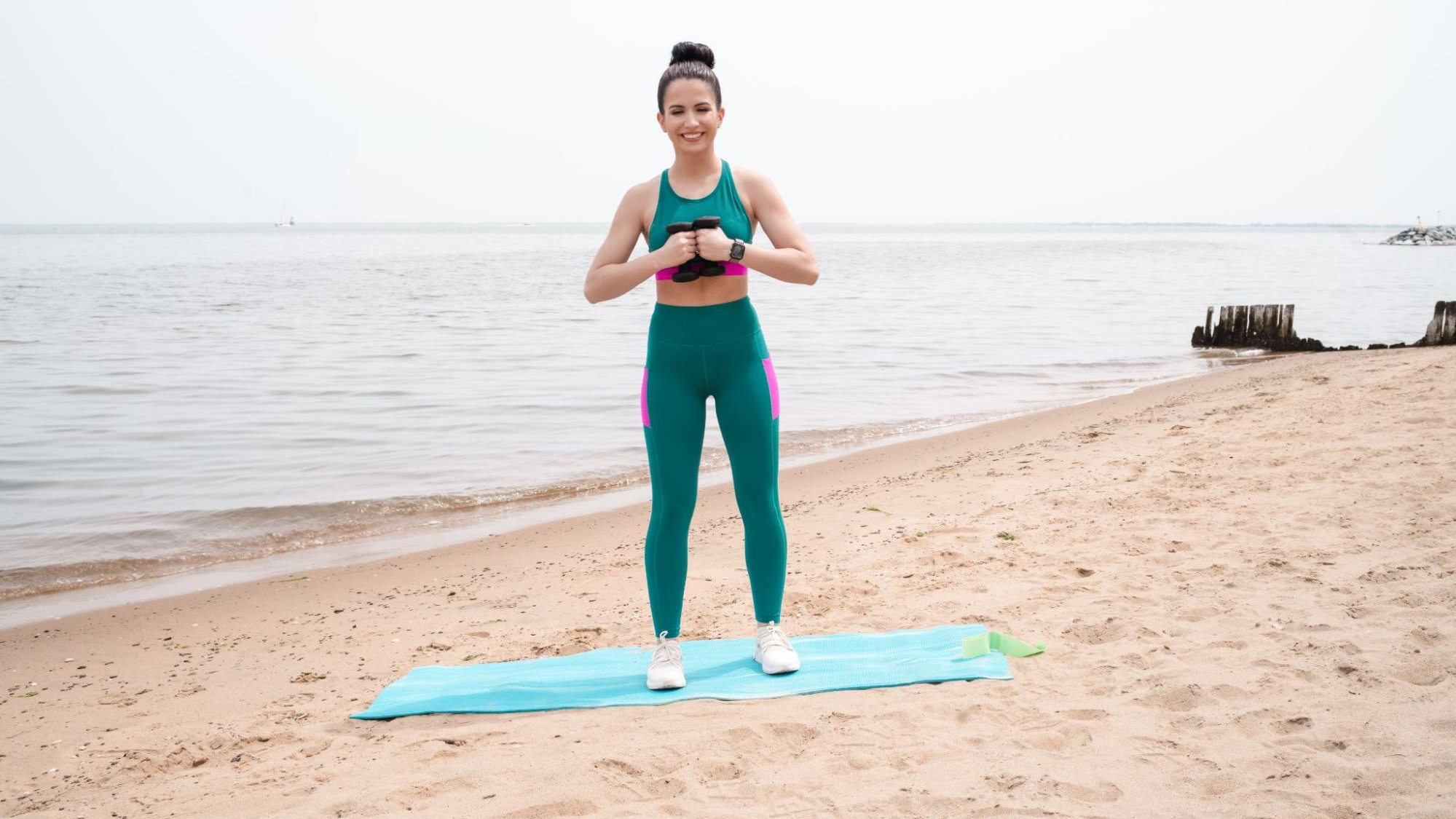
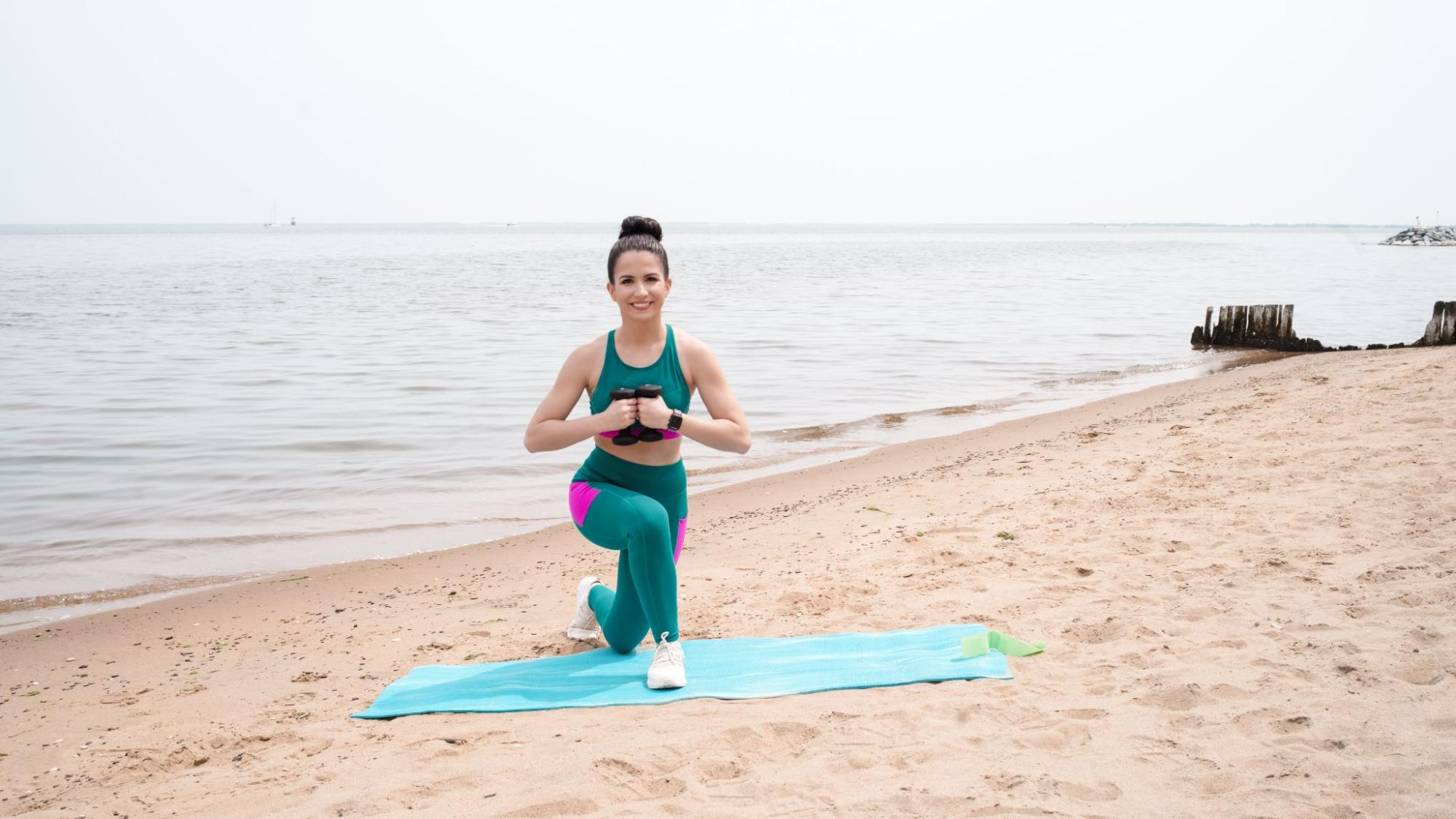
To build strength and stability, the dumbbell curtsy lunge targets your glutes (the muscles around your bottom), quads, and inner thighs. As you move one leg at a time, it also engages your core to help you balance.
- Stand tall with your feet hip-distance apart, with a dumbbell in each hand.
- Step diagonally back with one leg, crossing it behind the other leg, and bending both knees into a lunge position.
- Push through your front heel to stand back up and repeat on the other side. That's one repetition.
2. Donkey kicks

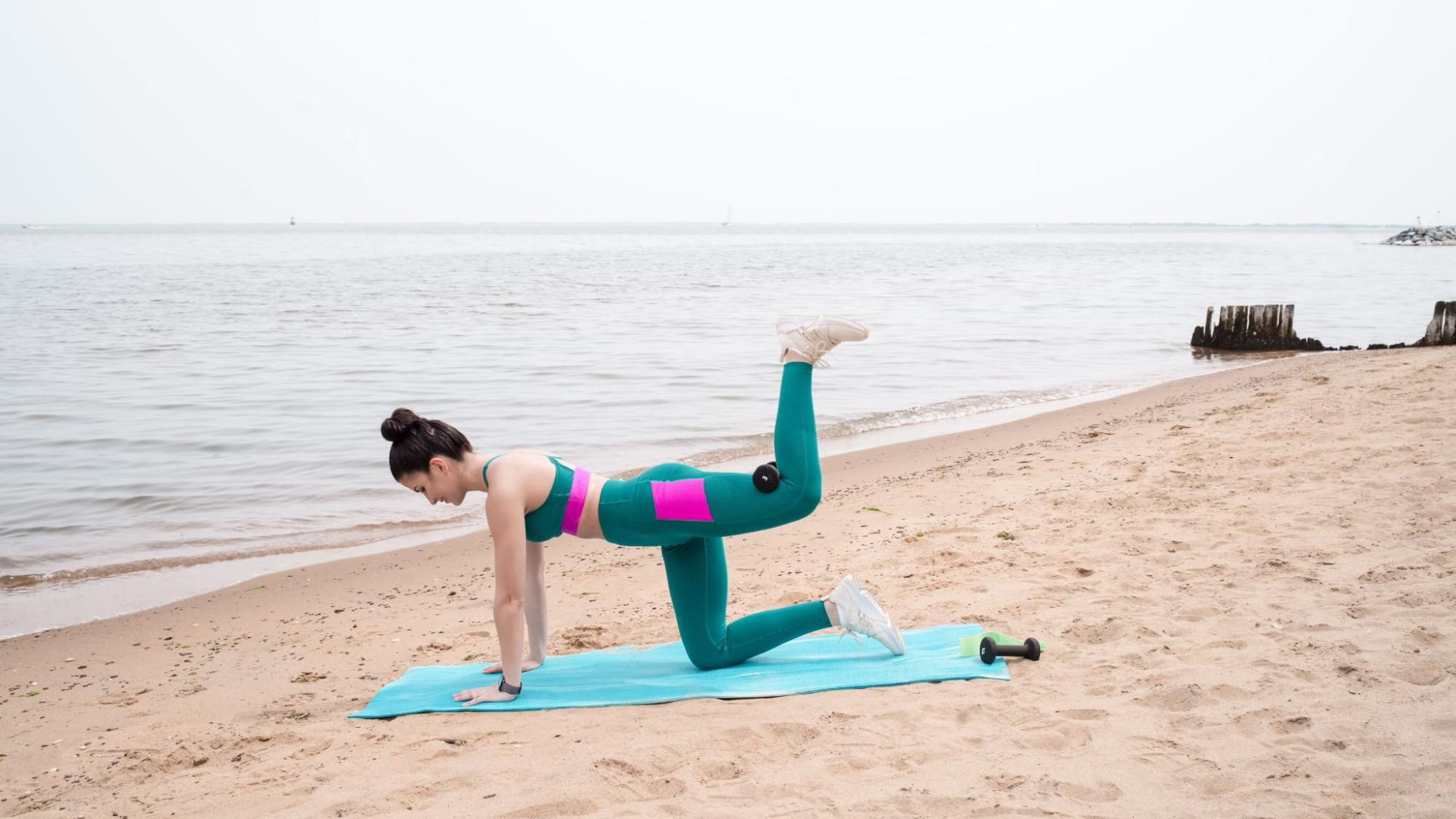
"Donkey kicks are an amazing exercise for the glutes, specifically targeting the gluteus maximus," shares Thomas. "Just like many leg exercises, they also engage the core."
Start your week with achievable workout ideas, health tips and wellbeing advice in your inbox.
- Begin on all fours with your hands directly under your shoulders and knees under your hips.
- Place a dumbbell behind one knee and lift the leg so your thigh is parallel to the floor, keeping the knee bent at 90 degrees.
- Hold this top position, squeezing your glutes and hamstrings.
- Slowly lower your leg back to the starting position. That's one repetition.
- Complete all repetitions, then repeat on the other side.
3. Lateral lunges
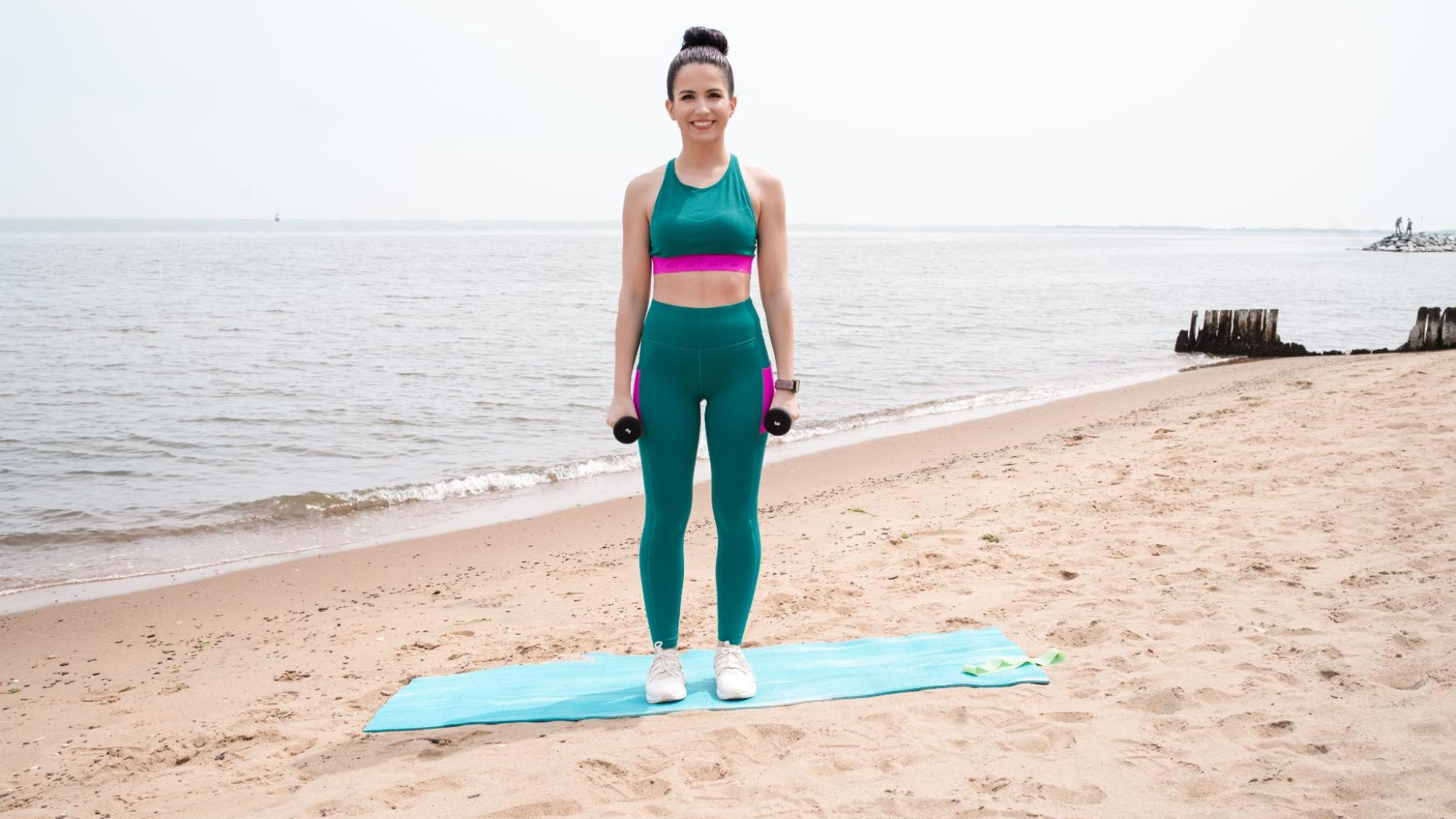

Thomas likes adding this exercise to leg workouts with dumbbells because the lateral lunge targets the gluteus muscles, quads, and hamstrings and engages the inner and outer thighs. The move also improves lower body strength, stability, and flexibility.
- Stand tall with your feet hip-distance apart, with a dumbbell in each hand.
- Take a wide step to the side with one leg, keeping the other leg straight and your toes pointing forward.
- Bend the knee of the lunging leg, lowering your body towards the ground while keeping your chest up.
- Push through the heel of the lunging leg to return to the starting position. That's one repetition.
- Complete all repetitions, then repeat on the other side.
4. Reverse lunges
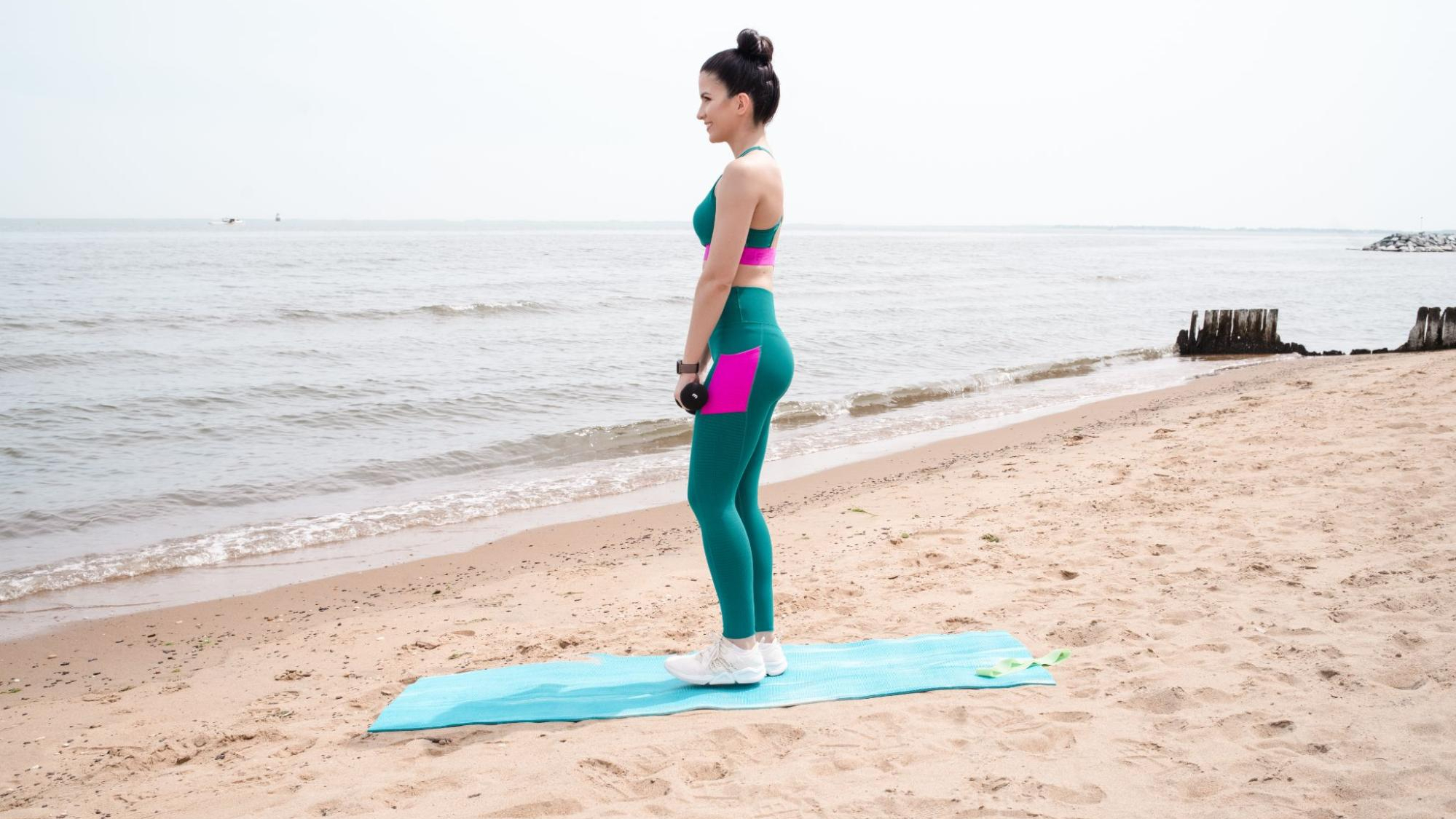
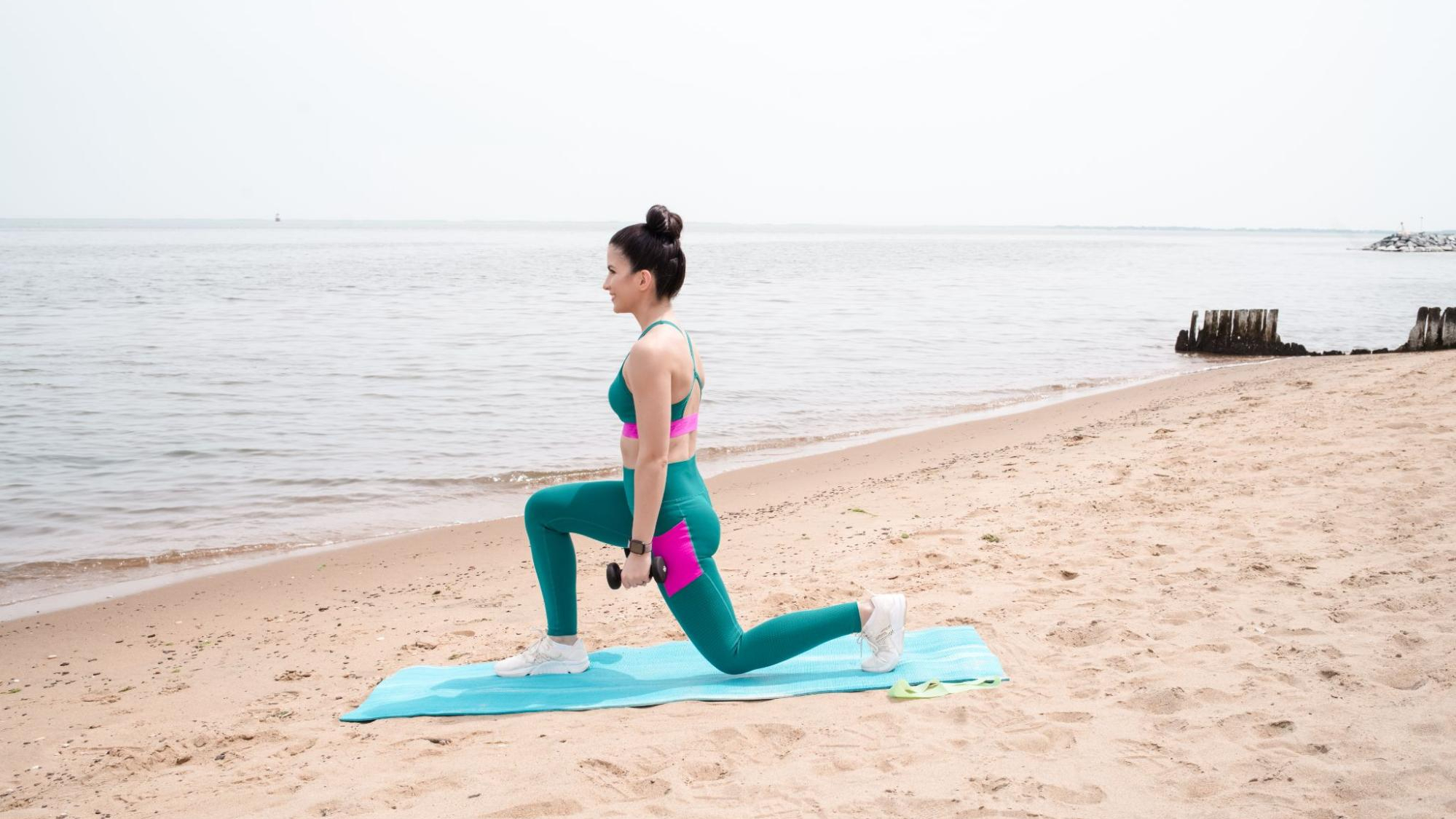
Like many lunge variations, reverse lunges target the glutes, quads, and hamstrings, emphasizing the posterior chain muscles (glutes and hamstrings) compared to the standard forward lunge.
- Stand tall with your feet hip-distance apart, with a dumbbell in each hand.
- Step one leg back, lowering into a lunge position by bending both knees to 90 degrees.
- Ensure that your front knee doesn't extend beyond your toes.
- Push through the front heel to stand back up. That's one repetition.
- Complete all repetitions, then repeat on the other side.
5. Romanian deadlifts (RDLs)
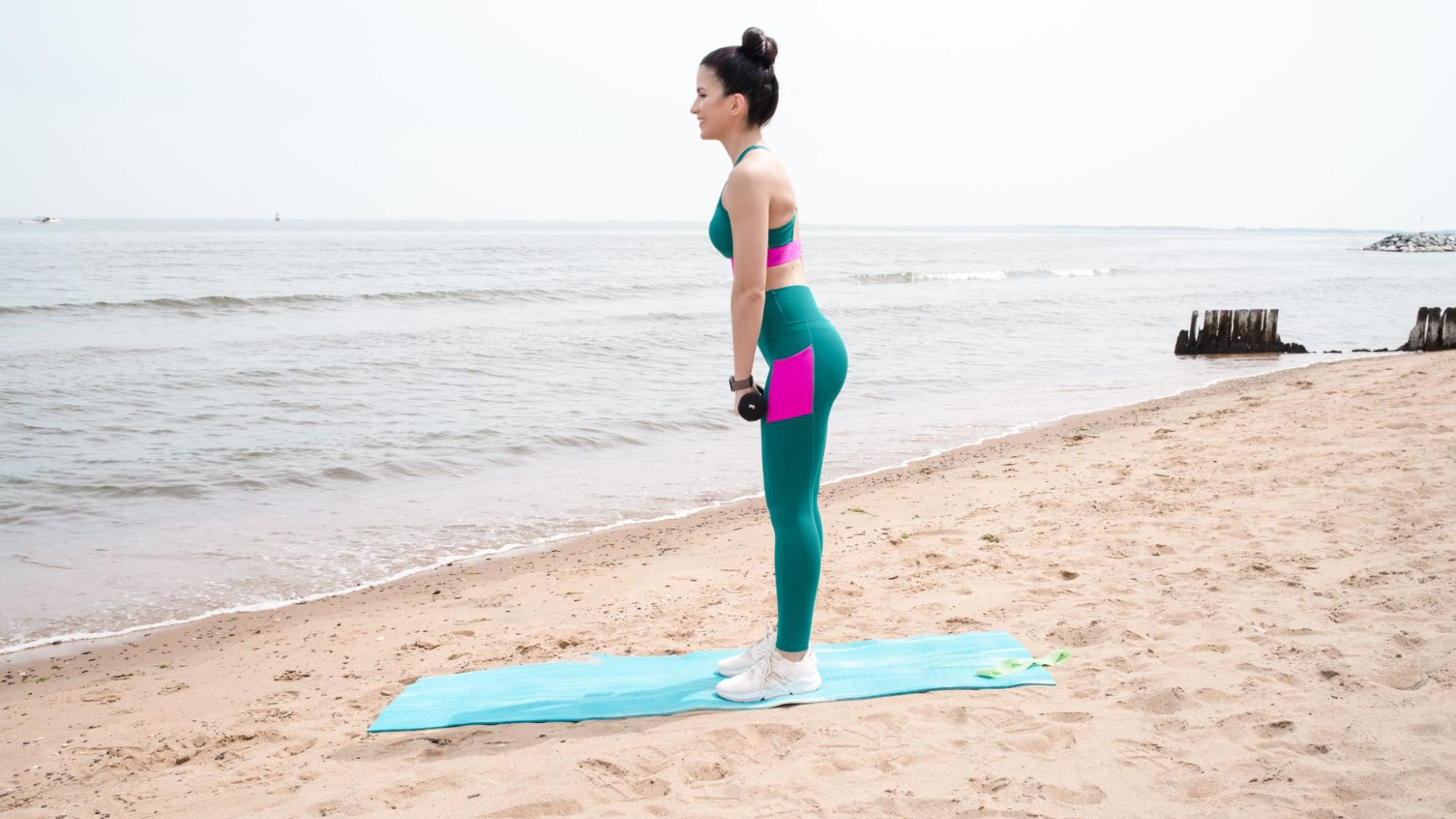

"RDLs primarily target the hamstrings and glutes and engage the lower back and core for stability," explains Thomas. "They are effective for building posterior chain strength and improving hip hinge movement patterns."
- Stand tall with your feet hip-distance apart, with a dumbbell in each hand.
- Hinge at the hips, keeping your back straight as you lower the dumbbells toward the ground.
- You can keep a slight knee bend, but this shouldn't feel like a squat position.
- Engage the hamstrings and glutes to return to the starting position, squeezing your glutes at the top. That's one repetition.
6. Single-leg bridge
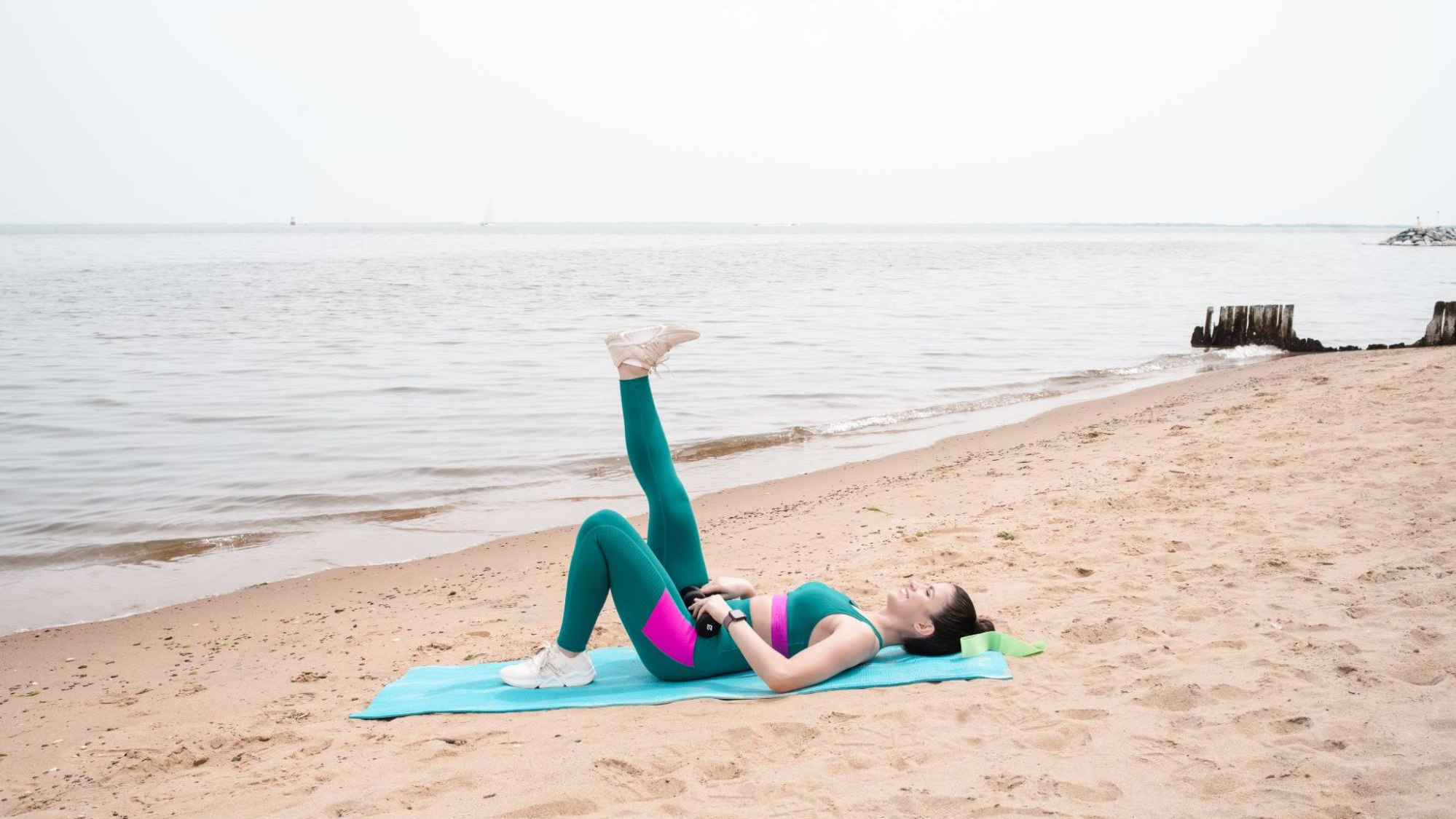
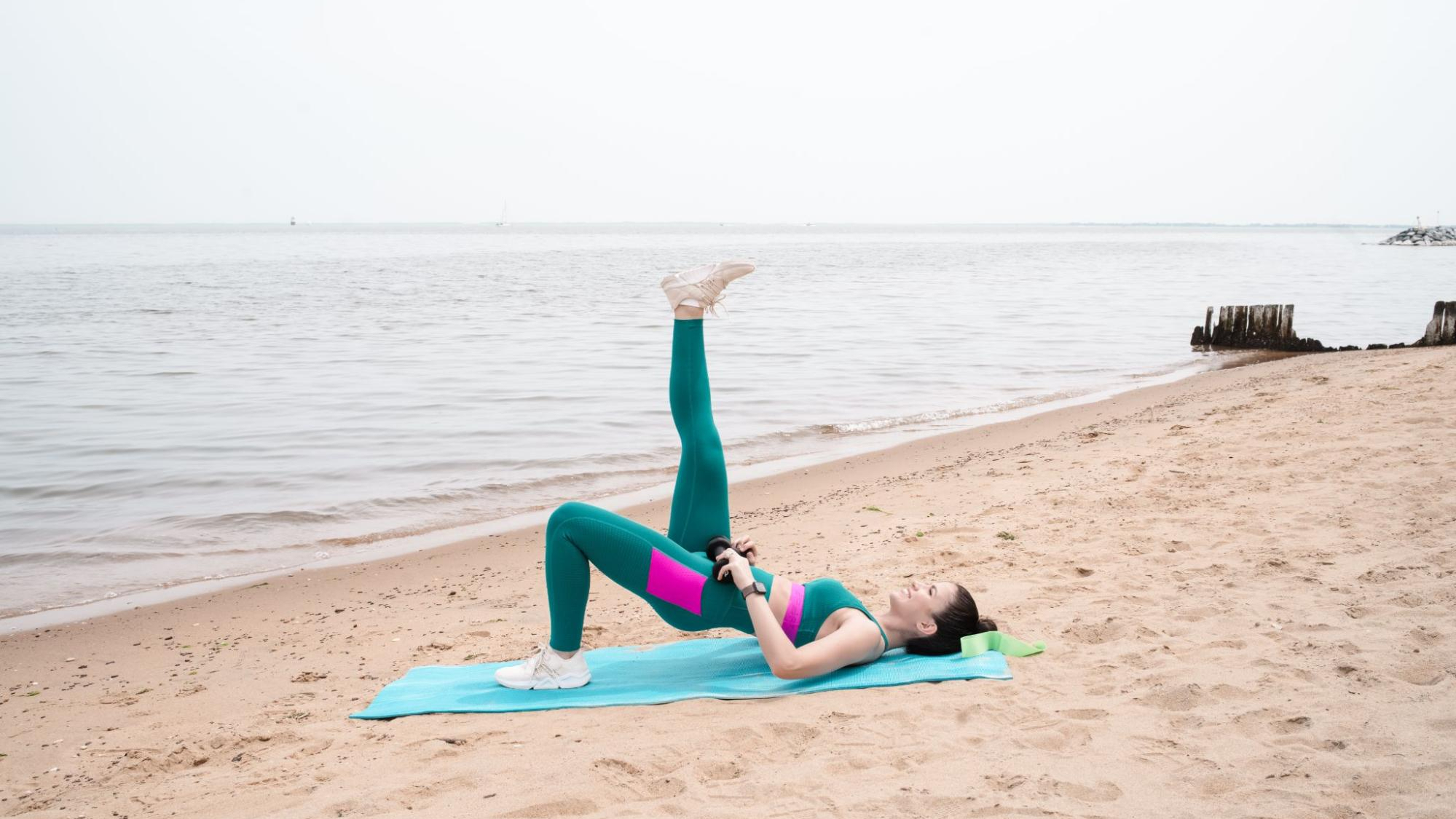
Thomas says single-leg bridges target the glutes, hamstrings, and lower back muscles. They're especially great for improving hip, glute, and core strength, stability, and balance.
- Lie on your back with your knees bent, feet flat on the ground, and hold a dumbbell on the front of your pelvis.
- You can place your hands on the floor along your sides if you need more balance or cross them over your chest as your core strength and stability improve.
- Lift one leg straight up towards the ceiling while keeping the other foot on the ground.
- Engage the glutes and lift your hips towards the ceiling, forming a straight line from your shoulders to your knee.
- Lower your hips back down. That's one repetition.
- Complete all repetitions, then repeat on the other side.
7. Single-leg deadlifts
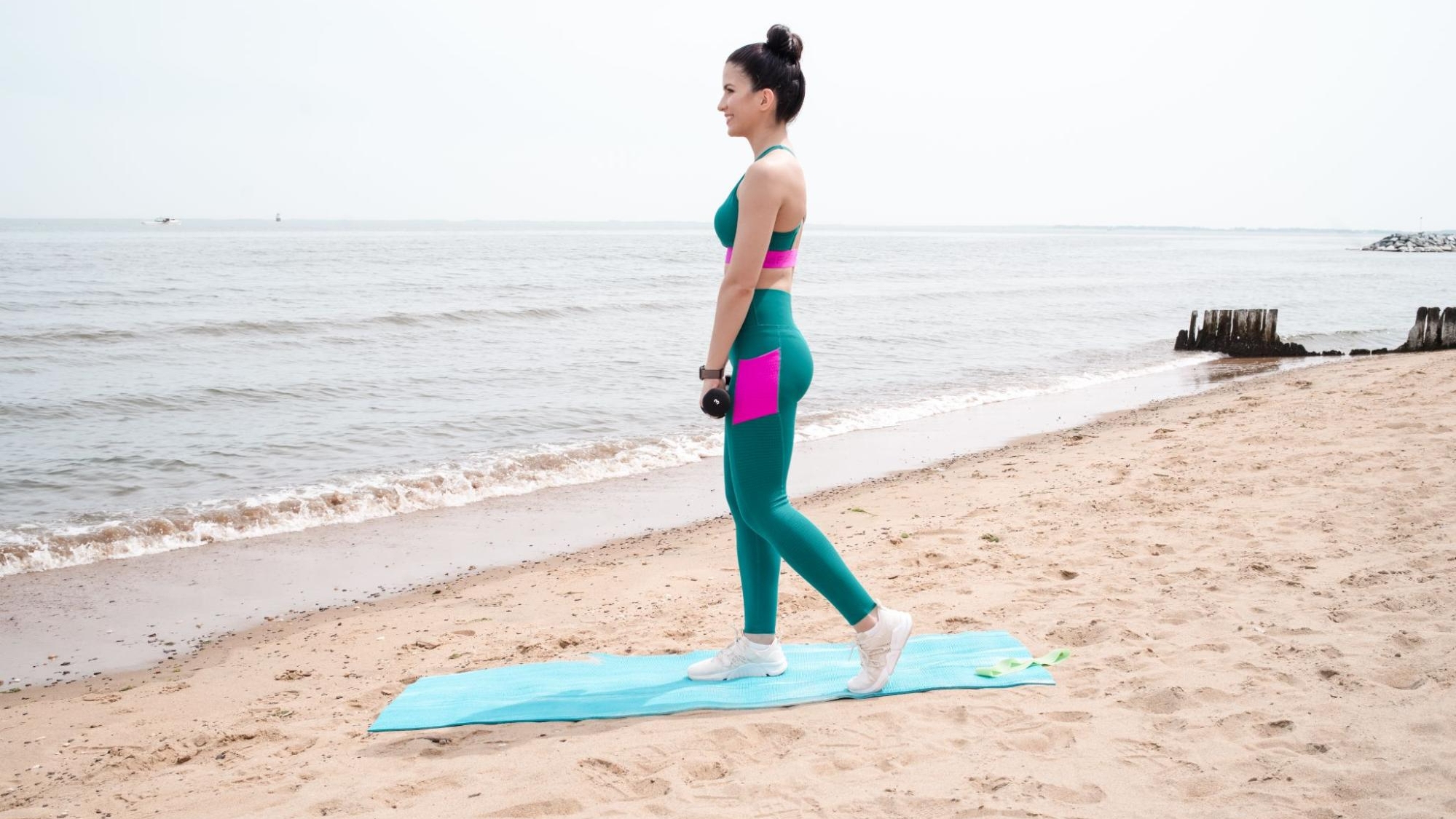
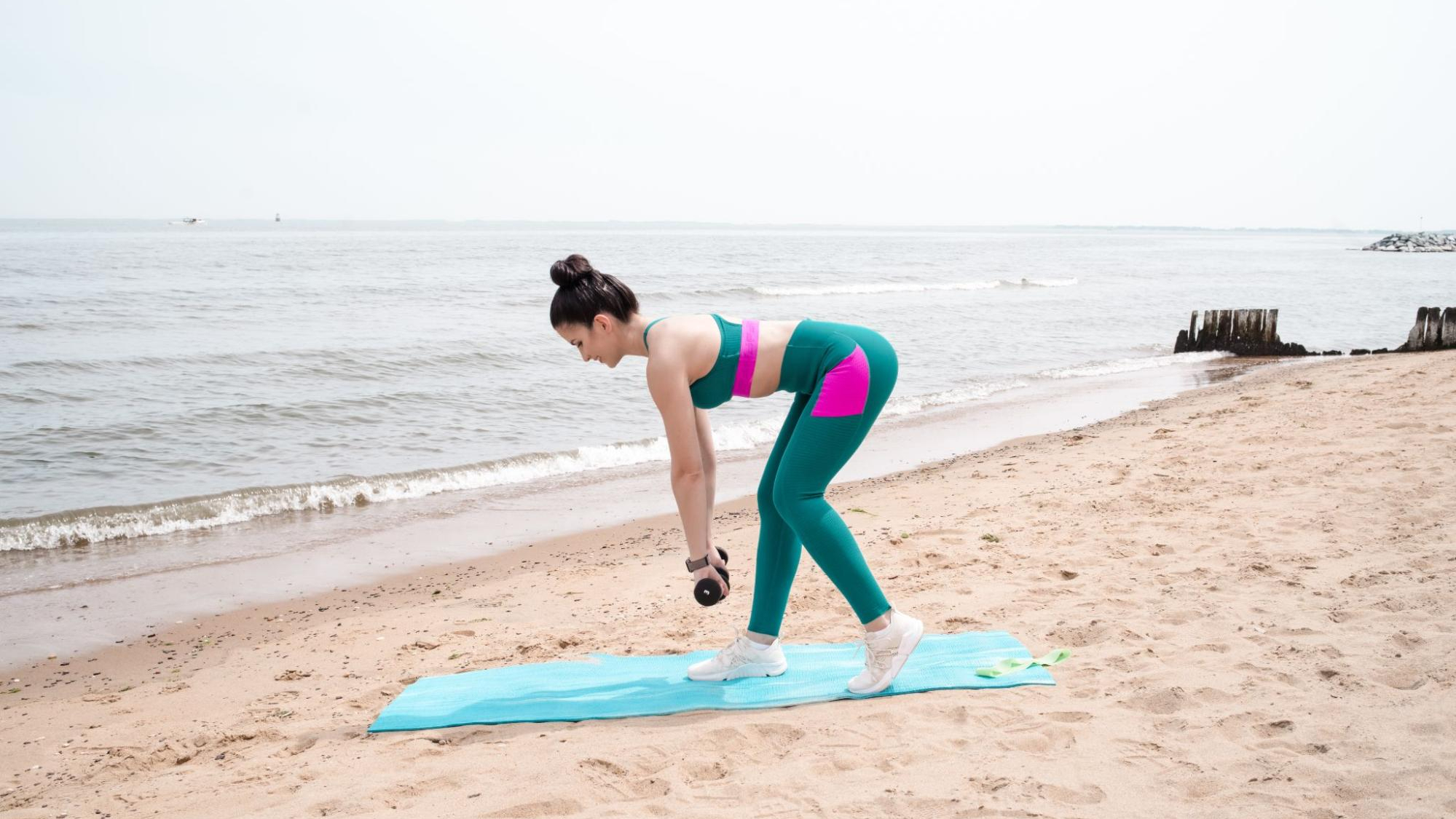
According to Thomas, "Single-leg deadlifts are a great exercise for improving balance, stability, and coordination while targeting the glutes, hamstrings, and lower back. They also help to correct muscle imbalances between the left and right sides of the body."
- Stand tall with your feet hip-distance apart, with a dumbbell in each hand.
- Shift your weight onto one leg, and take a slight step back with your other leg and lift your heel.
- Hinge at the hips, and lower the dumbbells towards the ground while extending the opposite leg straight behind you as a counterbalance.
- Keep your back straight and engage the glutes and hamstrings to return to the starting position. That's one repetition.
- Complete all repetitions, then repeat on the other side.
8. Sumo squats


Like other squat variations, the sumo squat targets your glutes and quads and includes your adductors — the inner thigh muscles. Thomas says this dumbbell leg exercise can help you improve hip mobility and increase stability in the lower body.
- Stand tall with your feet wider than shoulder distance apart and toes pointing outwards, with a dumbbell held vertically in each hand.
- Slowly lower your backside as far as possible by bending your knees and pushing your hips back.
- Your weight should be on your heels, and you should keep your chest up and hips back so your knees don't extend past your toes.
- Push through your heels to stand back up. That's one repetition.
Thomas suggests finishing your workout with a 5-10-minute cooldown with static stretches (where you hold a single pose) or a quick massage with one of the best foam rollers.
Can you build stronger legs with just dumbbells?
Thomas says that you can absolutely build stronger legs with just dumbbell leg exercises, and dumbbells can indeed be a highly effective tool for building more muscular legs.
These moves "target different muscles in your lower body, including your quadriceps, hamstrings, glutes, calves, and even your core," she says. "So, whether you have access to a full gym or just a set of dumbbells at home, you can still achieve great results and build strong, toned legs!"
How heavy should dumbbells be for leg workouts?
There's no fixed weight that you should lift, as it depends on your body and experience with dumbbells. However, the guidance is no different than choosing a dumbbell weight for other exercises.
Thomas says the aim is to choose a weight that challenges you but allows you to maintain proper form throughout the exercise. "If you can easily complete the repetitions with no challenge, the dumbbells may be too light, and you may need to increase the weight."
"On the other hand, if you find it difficult to complete the repetitions with proper form, the dumbbells may be too heavy, and you may need to decrease the weight," she explains.
As you get stronger, you can gradually increase the weight to challenge your muscles. This is known as the progressive overload training technique and is an effective muscle-building method.
How often should you do dumbbell leg workouts?
As a general guideline, Thomas recommends doing dumbbell leg workouts twice weekly. "Rest and recovery are crucial for muscle growth and overall performance. Overtraining can lead to decreased performance and increased risk of injury," she notes.
"It's also important to incorporate other types of exercises, such as cardiovascular workouts and flexibility training, into your routine for a well-rounded fitness program."
What are the benefits of leg workouts with dumbbells?
"Dumbbell workouts allow you to precisely target specific leg muscles, such as the quadriceps, hamstrings, glutes, and calves. This helps in developing balanced and well-defined leg muscles," explains Thomas.
Plus, they help you build functional strength, which helps with everyday activities like picking up heavy items, carrying groceries, or walking. And, as these moves also work your core, you get the benefits of core strengthening exercises too.
This includes improved posture, better balance and stability, and enhanced flexibility, all of which are crucial for injury prevention and improved performance in sports or other physical activities.
Amber Sayer is a Fitness, Nutrition, and Wellness Writer and Editor, and contributes to several fitness, health, and running websites and publications. She holds two Masters Degrees—one in Exercise Science and one in Prosthetics and Orthotics. As a Certified Personal Trainer and running coach for 12 years, Amber enjoys staying active and helping others do so as well. In her free time, Amber likes running, cycling, cooking, spending time outside, and tackling any type of puzzle.
